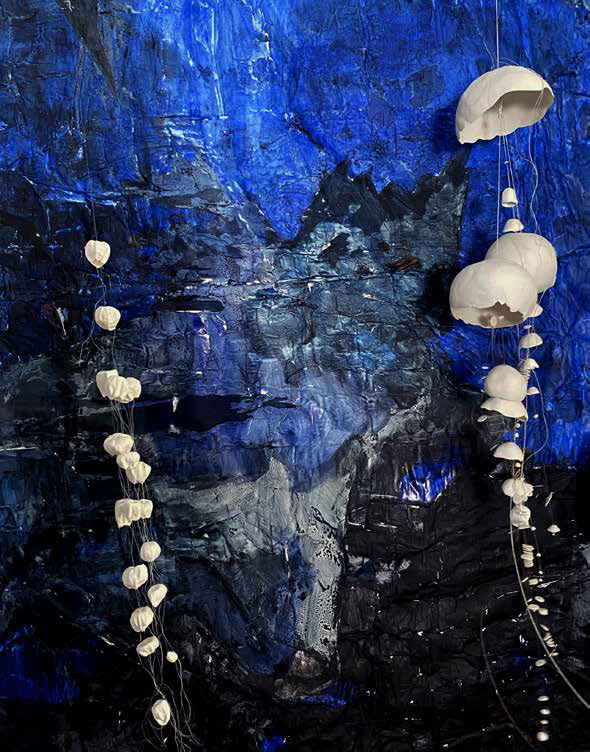More of the portfolio on instagram.com/ferchaudvalerie
Photographer – Artist Author
I have been practicing photography for over 30 years. I like to be in the moment. when everything falls into place perfectly. where my way of thinking is in agreement with what I do.
Today. as part of an artistic project with IFREMER (Brest) on the theme of the Abyss. I also work with porcelain. cyanotype and of course photography.
These three universes meet. complement each other and help me see my artistic approach in a new light.
1990-1993
Audiovisual training Dunkirk – Nîmes – London
Master’s degree
1986-1990
Fine Arts Angers
Modeling lessons
Publications
Magazines Life – The World of Religions – Capital
Contact Valérie Ferchaud, 39 rue Ange Blaize, 35000 RENNES, +33680 594 022
Artworks
TANT QU’IL Y AURA L’OCÉAN / AS LONG AS THERE IS THE OCEAN
It’s a story of immersion
Valérie Ferchaud, photographer and ceramist, had always wanted to explore the abyss. “This universe which is vital to us was obvious to me. » After seeing the exhibition “20,000 octets under the sea” in 2021 at the Capucins workshops in Brest, and having been fascinated by a researcher evoking the birth of all creation at the bottom of the ocean, Valérie decided to dive in. She offers Jozée Sarrazin a residency in her “Grands Fonds” department at IFREMER. They understood each other. Better: heard.
A story of encounters
In the deep sea, there are fascinating beings little known to the public. At the “Grands Fonds”, it is the anonymous researchers who are. “I wanted to showcase their work. I feel the need to make everyone want to protect the ocean, this common good.” But deep down… it’s deeper: if we know the results of the research, what do we know about the process? Above all: what do we know about “sensitive”? What makes you want to. What motivates for. What exalts. Everything that leads to understanding, discovery, knowledge. For sharing.
A story of sharing
The abyss teems with unexpected, even unusual life. “Polychaetes, archaea, diatoms, hydrozoans… The emotion aroused by the grace of these beings is an invitation to dream.” But scientific work itself is an incitement to the imagination. Scientists are overflowing with information, sensations, thoughts. What images pass through these concentrated, passionate glances? Obvious, again: scientists do not only have to share results, articles, diagrams…
It is then a story of representations
“With the photographic gaze and porcelain, I wanted to show what they observed, what they explained to me, what they perhaps even felt.” Interpret, because between research and art the approaches are common. “At the Snake Pike site a swirl of shrimp formed swarms on the walls of the hydrothermal vents. Were they shrimp or bees…or shrimp/bees?. The interest was not to reproduce identically since I have the intuition that my wild imagination will always be less elaborate than nature. Porcelain inspiring me with purity and fragility, its intransigence imposed itself. Also I took great pleasure in putting my hands in the earth. » And then there are these strange, xenomorphic objects, utensils and organisms. Finally, there are these human gazes which interpret, even before the photographer tries to restore them.
In the end, a story of promises
“Today, we identify 13% of marine species. There are still between 70 and 80% left to discover. » It also remains, unfortunately, to convince people that we must preserve and bring knowledge and understanding to the public and to institutions. But as long as there is the ocean and its abysses, there will be promises, and as long as there are researchers, hope. For all of us swarming on the surface.
Francis MIZIO (écrivain)

210 cm x 120 cm
Ink and acrylic painting Sylvie Salmon
Porcelaine Valérie Ferchaud

